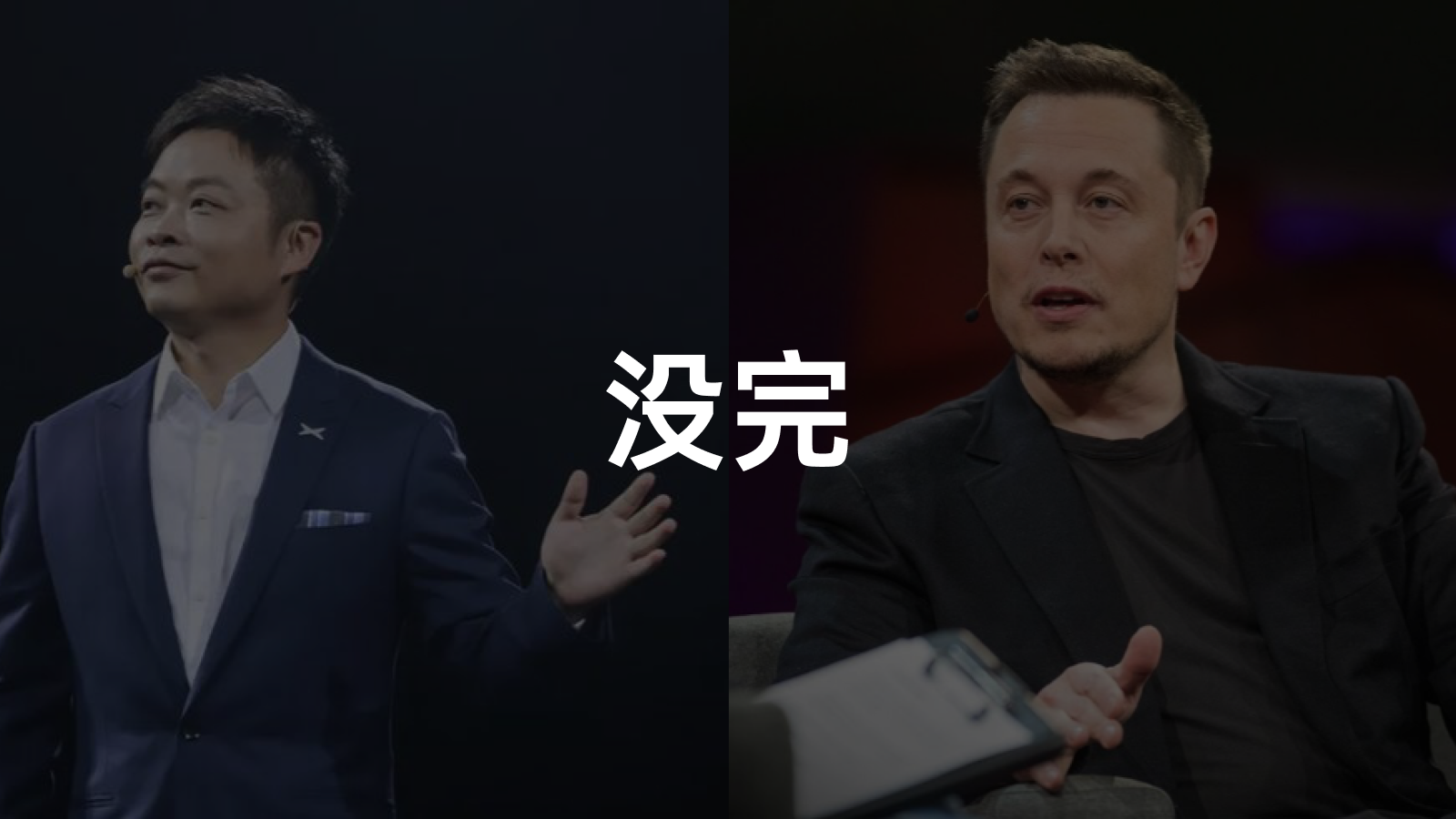On the evening of the 20th, a screenshot of He XPeng’s WeChat moments was sent in the group chat.
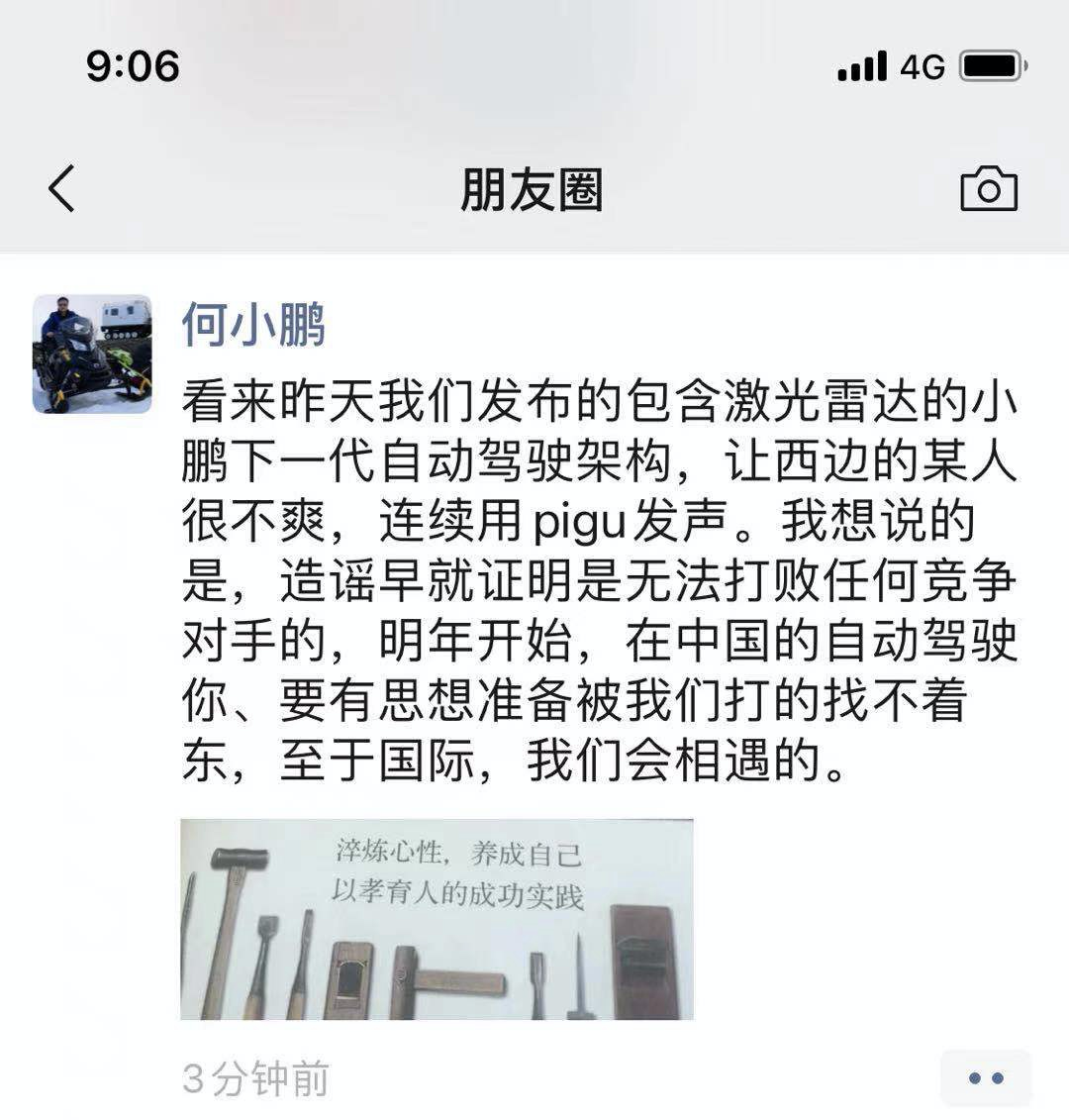
Surprised, I immediately rushed to Weibo to find out what was going on. After a brief investigation, I understood the reason behind it.
On the evening of November 20th (US Time), a Twitter user with the ID “Tasha Keeney” reposted the news from the Hong Kong English media “South China Morning Post” that XPeng Motors will use LIDAR on its new car in 2021.
This user also made a comment, implying that XPeng Motors’ adoption of LIDAR in its autonomous driving route was diverging from Tesla, this would limit XPeng’s upper limit. Finally, she even asked, “Does XPeng Motors not understand that their copying of Tesla’s plan cannot succeed?”
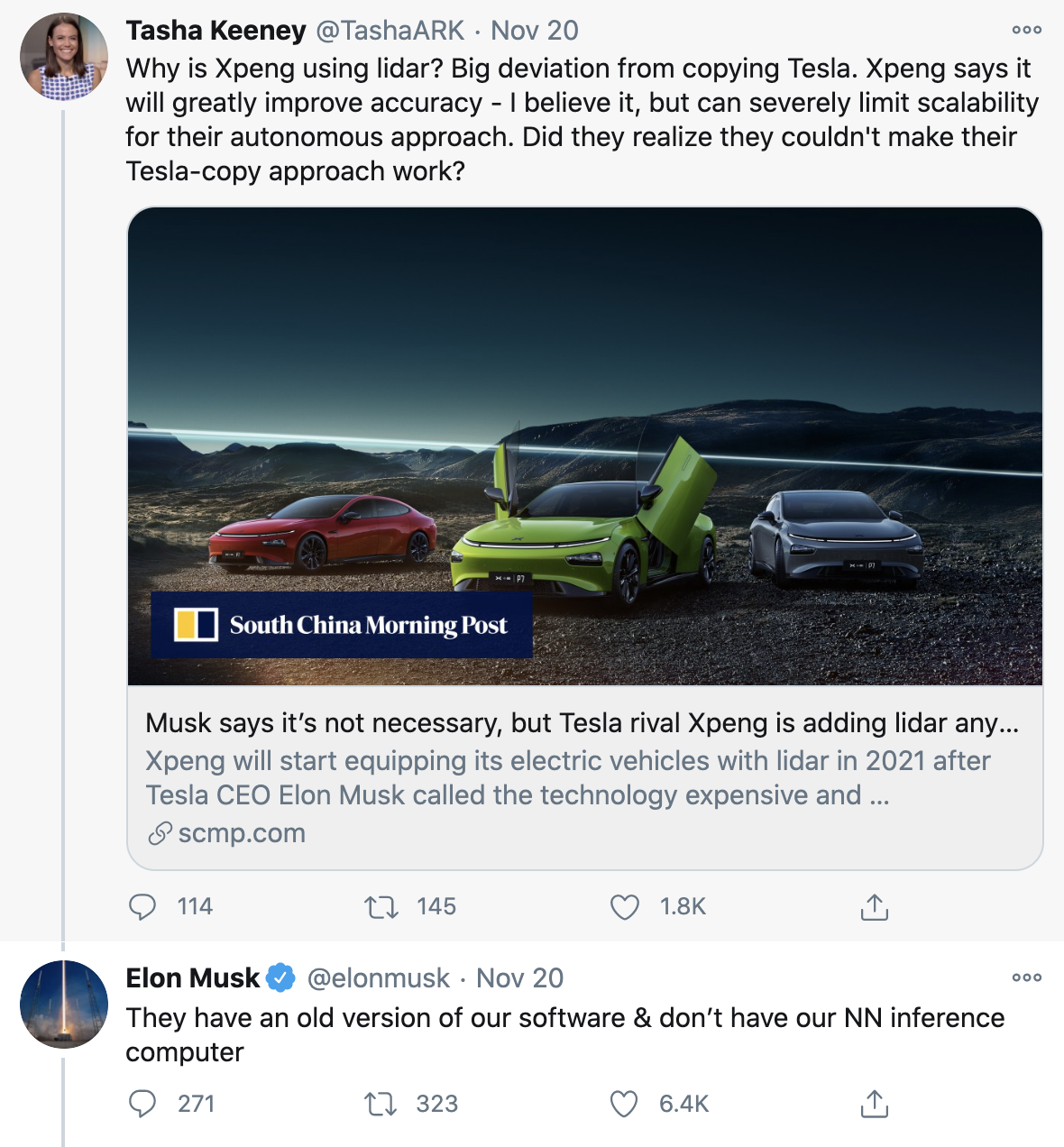
Elon Musk himself responded to this tweet, saying that XPeng Motors has Tesla’s old version of the code but not Tesla’s new neural network system.
Then in another reply, Musk said that XPeng Motors also stole Apple’s code.
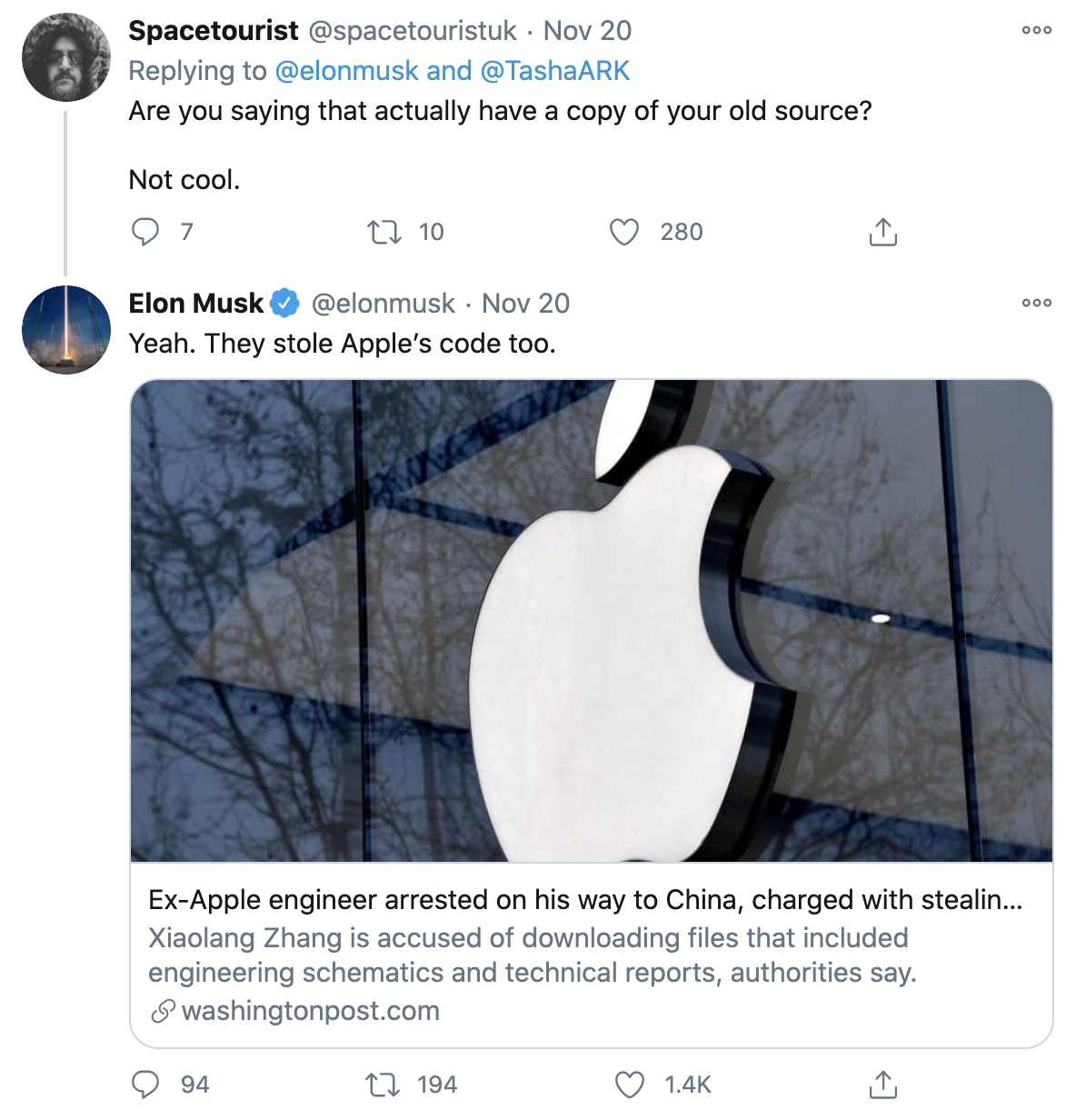
Then came He XPeng’s reply at the beginning.
The dispute between XPeng Motors and Tesla is not the first of its kind. Taking advantage of this topic, I want to briefly review it for everyone.
Unresolved Disputes
Suspicious Job Hopping
On January 3, 2019, Tesla’s Autopilot engineer, Cao Guangzhi (referred to as Cao below), resigned and joined XPeng Motors shortly after. Two months later, Tesla sued Cao (not XPeng Motors) for stealing trade secrets. The following is a brief summary of the incident:
Tesla sued Cao for uploading a copy of the Tesla Autopilot source code to his personal iCloud account and personal electronic devices at the end of 2018, which included about 300,000 code files. Cao then shared this data with XPeng Motors.
Cao admitted that he did upload the relevant code data to his personal cloud and device for his convenience in work, and that such practices are not uncommon. He also said that he had carefully deleted sensitive data from his personal device before leaving Tesla.As the defendant employer, Xpeng Motors has no objections to the transfer of source code data from Cao Jiang to his personal account and device; however, Xpeng Motors denies any misconduct.
Tesla believes that Xpeng Motors recruited at least 5 engineers who left Tesla and their responsibilities were very similar. Among them, Gu Junli, who joined Xpeng Motors in 2017, became the vice president of Xpeng Motors’ autonomous driving project and led the development of the company’s autonomous driving technology from 2018 to 2019. Meanwhile, Cao Guangzhi was one of the 40 employees with permission to access software source code in the Autopilot project.
Xpeng Motors said that it is normal for employees in the same industry to switch between companies, and it is natural for companies to pursue talent.
Tesla said that former Apple engineer Zhang Xiaolang was arrested for allegedly selling confidential files of Apple’s Project Titan to Xpeng Motors. The case is highly similar to this case, and such similarities give Tesla reason to suspect that the defendants in both cases have met with the same Xpeng Motors senior executives, and may even have similar compensation as a condition for accessing data.
Cao stated that he received an offer from Xpeng Motors on December 12, 2018, and disconnected his personal iCloud from Tesla’s work network on December 26. After disconnecting his personal iCloud, Cao continued to use Tesla’s work network from December 27 until the New Year’s Day holiday.
Cao did not specify the date he joined Xpeng Motors, but Tesla stated that Cao’s resignation date was January 3, 2019. As Cao said, before leaving, he carefully deleted secret documents related to the company from his cloud and personal work devices, and he admitted to deleting his browsing records on his Tesla work computer.
Cao’s lawyer stated that the autopilot-confidential files left on Cao’s personal device after leaving Tesla could only exist due to a deletion oversight. Cao did not give any valuable confidential files or business secrets to Xpeng Motors.
So far, Tesla has no conclusive evidence that Cao Guangzhi leaked autopilot confidential files to Xpeng Motors.
In January 2020, Tesla summoned Xpeng Motors’ US business company, XMotors, requesting access to the complete source code library of Xpeng Motors’ XPilot, as well as copies of the hard drives of Xpeng Motors executives. In addition, Tesla also requested access to court records of Apple’s criminal charges against former Xpeng Motors employee Zhang Xiaolang.This scene reminds me of a famous scene in the movie “Let the Bullets Fly”: Sixie ate a bowl of cold noodles, and then Huang Siliang brought along a martial arts scholar and the owner of the noodle shop to claim that Sixie only paid for one bowl even though he ate two. One side argued that they paid for one bowl as they only ate one bowl, while the other side insisted that he only paid for one bowl although he ate two.
Under the repeated provocations of Hu Wan, Sixie finally cut open his belly to prove that he only ate one bowl of cold noodles. Although he cleared his name, he lost his life.
I want to say that XPeng Motors may not necessarily be Sixie who only ate one bowl of cold noodles in this case, and Tesla may also not necessarily be Hu Wan with other intentions. However, the behavior of requesting access to Zhang Xiaolang’s criminal charge records and the full source code repository of XPilot and the hard drive copies of executives does have a taste of “you have to pull it out horizontally for me to see it” from the movie.
Fortunately, the referee this time is not the instigating martial arts scholar. The federal court rejected Tesla’s claims, believing that Tesla’s use of Zhang Xiaolang’s materials to extend to this case is “speculative and unsupported,” and Tesla’s access to XPeng Motors’ relevant documents is also disproportionate to the current needs of this case, which may interfere with ongoing litigation.
However, things are not over yet. The court has asked XPeng Motors to prepare the source code for XPilot, and the corresponding files will be transferred to a third-party organization for comparison and review with the Autopilot source code, serving as a judgment on whether XPilot has engaged in theft or not.
Musk tweeted that XPeng Motors had “stolen” their own code, but He XPeng responded on Weibo that rumors did not defeat any competitors. However, there is currently no conclusive court ruling. As an observer, I think we can let the bullets fly for a while.
Disagreement on LiDAR
One of the topics that the two giants discussed this time was the application of LiDAR. From her speech, Tasha Kenney, a Twitter user mentioned at the beginning of the article, seems to be siding with Tesla, but personally, I do not agree with her “finding problems with answers” logic.
Does Musk hate LiDAR?
In the previous article about FSD, I mentioned that Musk himself is very pessimistic about the application of LiDAR in the assisted driving industry.
At the automated driving day, he emphasized that “Lidar is lame.” LiDAR is crippled. He believes that the point cloud data captured by LiDAR is lacking in information. Although it has spatial information, it has no color or pattern. In a stationary state, it cannot distinguish between dynamic/static objects or feature types.# Autopilot Day
Reporters have asked Musk before whether “Lidar would become a better redundant solution at some impossible-to-exceed 99.999% node” in autonomous driving. However, Musk gave a more extreme response: that Lidar is a “fool’s errand” and that anyone who relies on Lidar as the primary perception method is “doomed to fail.”
His reasoning is simple: Lidar is “expensive and unnecessary” for autonomous driving, and Musk even used the term “appendix” to describe Lidar, saying “one appendix is bad enough, why add more? It’s ridiculous.”
He ended his response with a very Musk-like “You will see.”
Although Musk appears to strongly dislike Lidar, he does not hold this view across the board. At Autopilot Day, he voluntarily explained this issue.
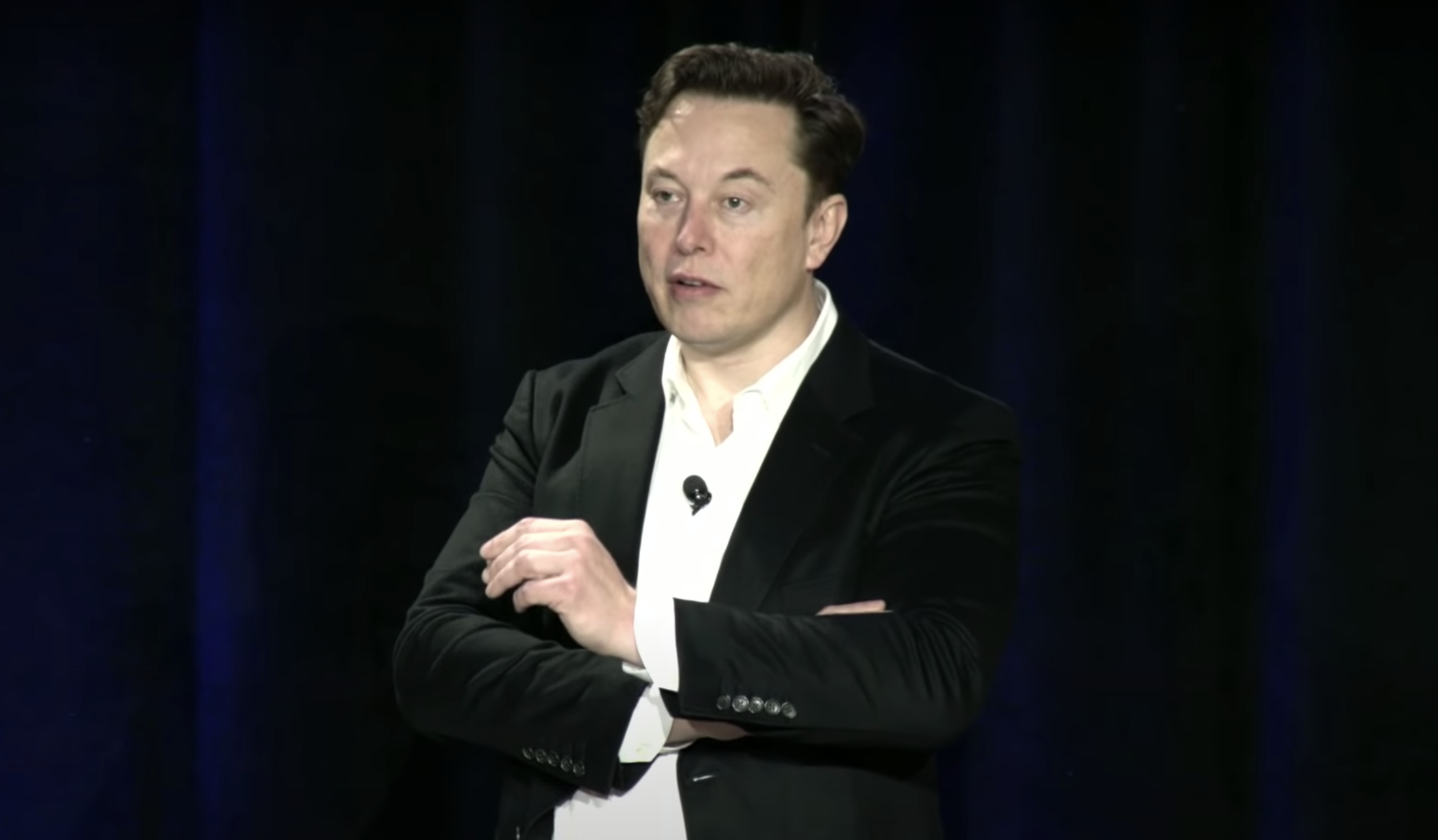
Musk said he only disapproves of Lidar in autonomous driving. He himself participated in the development of Lidar projects for SpaceX.
He also claimed that “(once visual perception is sufficiently strong for autonomous driving), Lidar will be meaningless.”
In summary, Musk’s view (or Tesla’s view) on Lidar can be summarized as follows:
- Expensive
- Not suitable for primary perception in autonomous driving
- Overkill as an auxiliary perception method
- No irreplaceability compared to visual solutions
If we look at the recent small-scale testing of FSD Beta, Tesla’s claims do have some convincing power.
XPeng: Not Agreed
Ignoring the case, XPeng is indeed the acknowledged “Tesla follower.” Apart from similar strategies on intelligence and especially assisted driving, many details and logic in the product end of XPeng’s car can also be seen as bearing Tesla’s shadow.
Since Tesla’s path has been proven viable, selectively following in its footsteps is actually a cautious strategy.
However, XPeng has “gone with the flow” on the issue of Lidar.
XPeng unveiled the XPilot update at the Guangzhou Auto Show. In the new version of assisted driving, the hardware has been upgraded as follows:
- 5G RTK
- High-precision maps for city roads
- 200 TOPS+ high-performance chip
- Higher integration domain controller
- Lidar
In a group interview after the press conference, He XPeng said that the product equipped with Lidar will be released in 2021, and research on this project has been underway since the first half of last year, meaning that the Lidar project has been planned and prepared for two years.During an interview regarding the consideration of carrying LiDAR, He XPeng, the founder of XPeng Motors, replied that, “We are different from traditional autonomous driving or self-driving companies that use LiDAR as the core to draw high-precision maps. Our core is based on vision and high-precision vision maps. We believe that from the trend perspective, all roads, traffic lights, regulations, etc. around the world are designed for human eyes to drive, which is the most effective, closest to human perception, and cheapest way. Moreover, with the combination of LiDAR, we can achieve safety. To be honest, in the first few years, we put safety first and would rather have hardware and software redundancy to ensure safety.”
The highlighted part of the speech is quite intuitive: XPeng Motors still regards vision as the core perception method, and LiDAR’s role is used as safety redundancy.
According to Elon Musk’s view, this belongs to the category of “using LiDAR in a wrong way.” However, Musk’s statement already contains two premises: one is that “visual perception is strong enough,” powerful enough to almost eliminate the advantages of LiDAR, and the other is that “LiDAR is expensive.”
Let’s look at these two points one by one. First, is the problem of visual ability? High-level production of autonomous driving perception programs requires multi-faceted consideration. The length of various mainstream perception solutions is summarized in the image below:
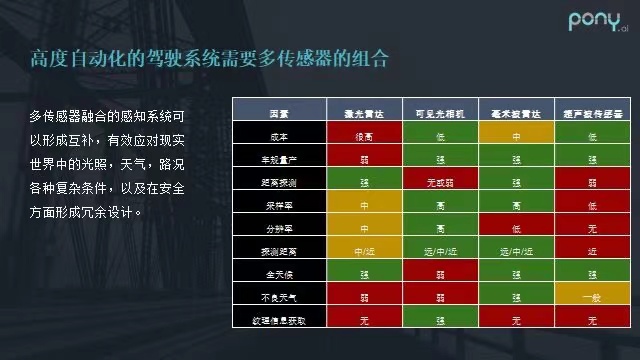
In the chart, we mainly compare LiDAR and cameras. In terms of performance, the two have obvious complementary relationships. Cameras have better sampling rates, resolutions, and working ranges, while LiDARs have better distance detection accuracy and more comprehensive weather coverage.
The working principle of LiDAR is to emit laser beams and record the return time of the laser beams to calculate the distance. Thanks to this “spontaneous light” working characteristic, LiDAR perception is tolerant to environmental light conditions. Under backlight or low-light conditions, LiDAR provides better perception capability than cameras that capture ambient light information.
On the other hand, distance detection capability is LiDAR’s absolute strength. The distance, size, and location information of objects that can be detected within the working range have excellent reliability and precision, which is precisely the deficiency of most visual perception solutions.
It is worth admiring that Tesla has significantly improved its distance detection capability in the FSD Beta rewritten this time by using a neural network-based 4D visual perception solution, which was previously well prepared by Tesla, as can be seen in the end-of-article content. For XPeng Motors, such methods are still very challenging to achieve in the short term, so LiDAR naturally becomes a more suitable solution for progress.I had the opportunity to attend an event of “Livox,” a brand of LIDAR under DJI, where they presented the advantages of their LIDAR technology very clearly in their PPT.
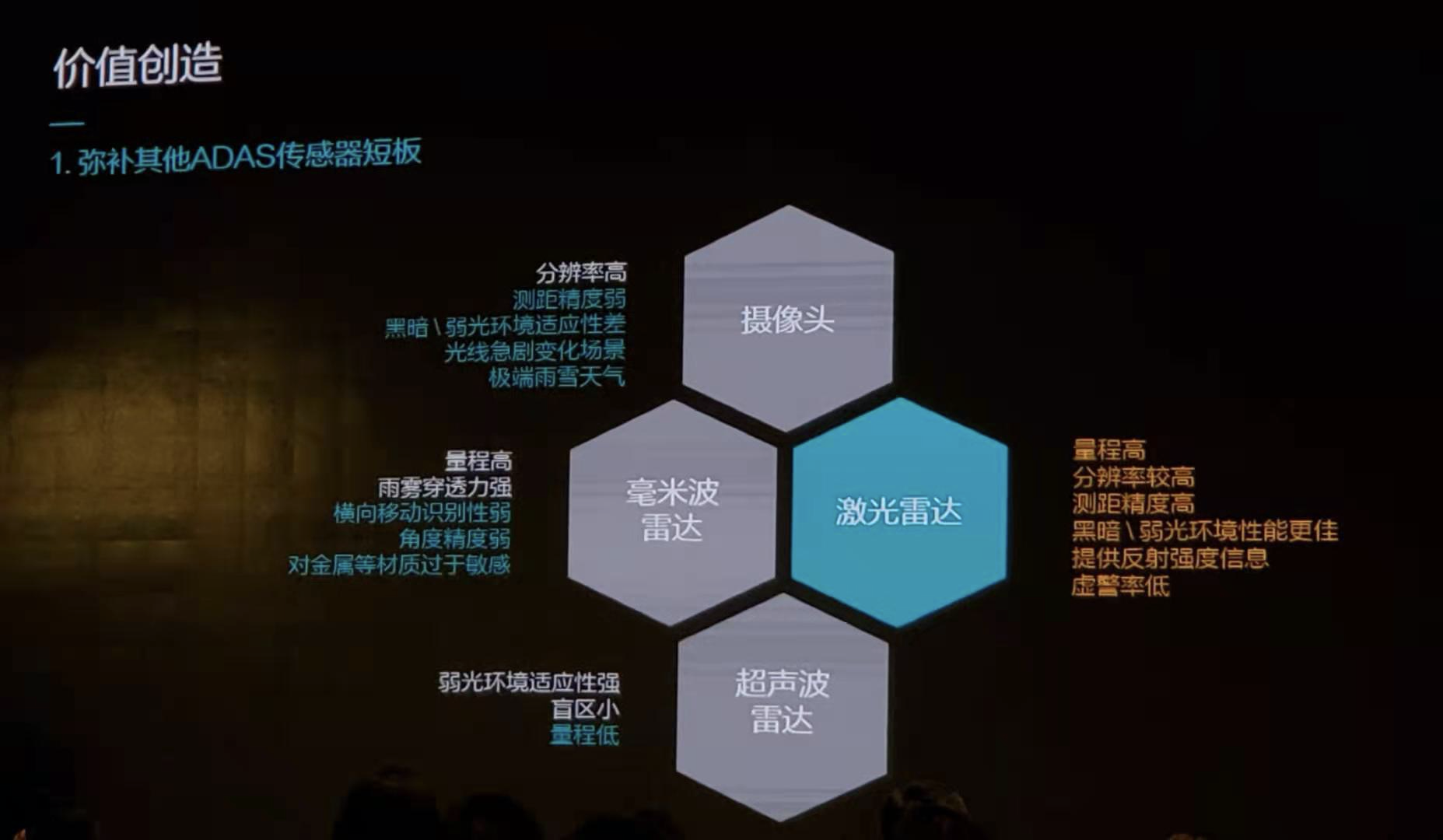
And the core value of these advantages in ADAS applications is also clear – safety redundancy.
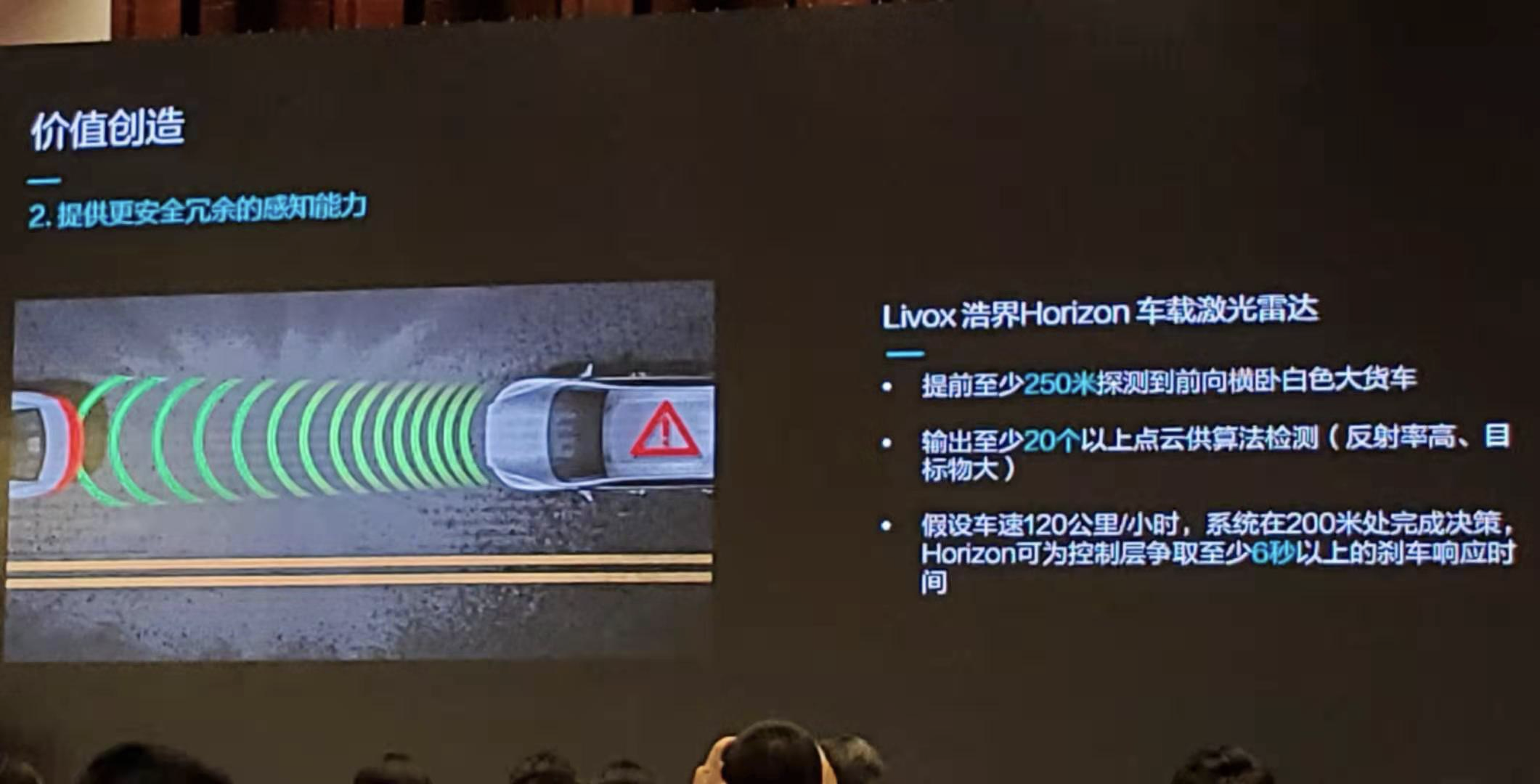
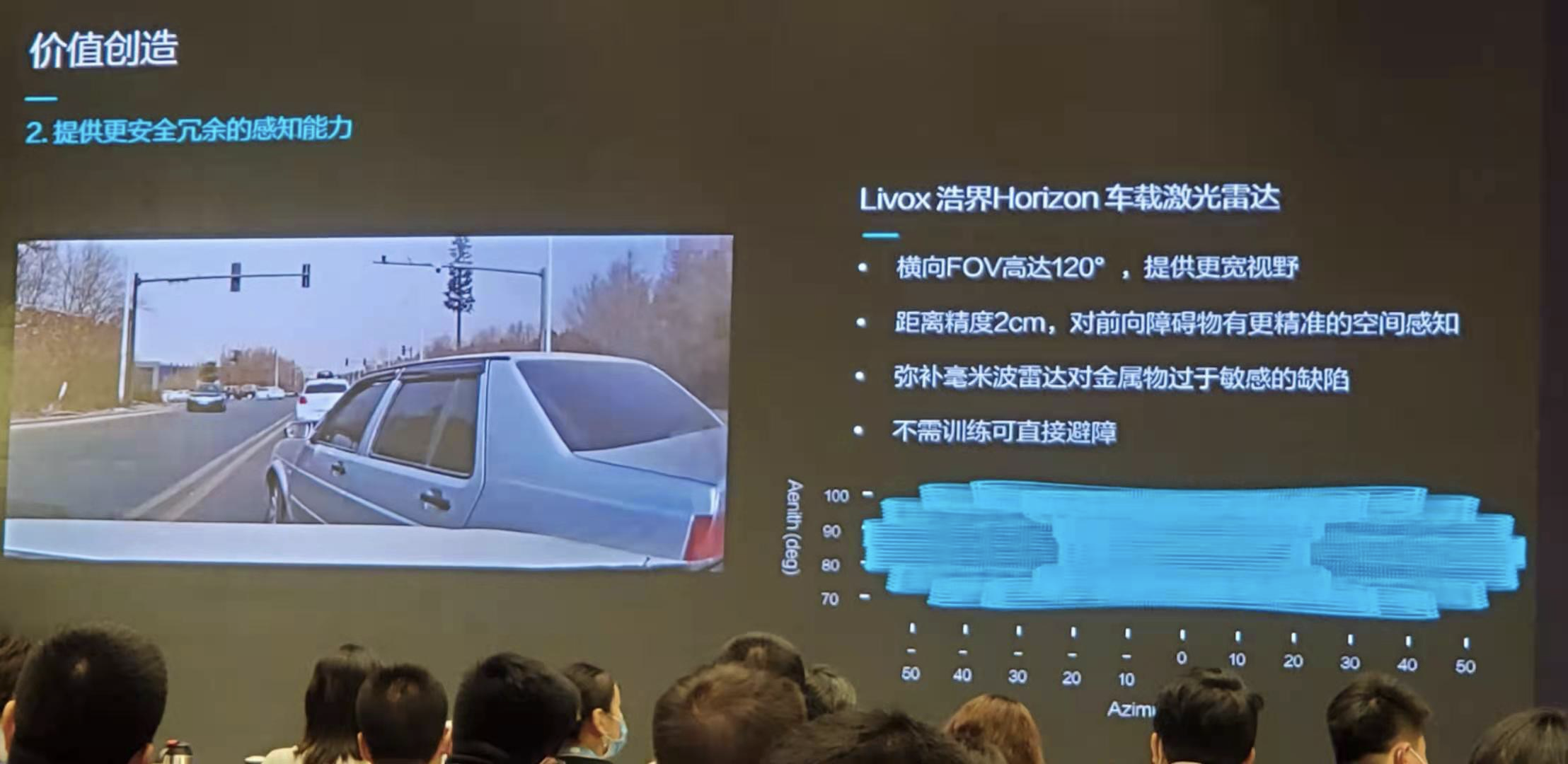
Not only safety redundancy, but the LIDAR solution also provides a “shortcut” to solving problems that some visual methods need to “beat around the bush” to solve.
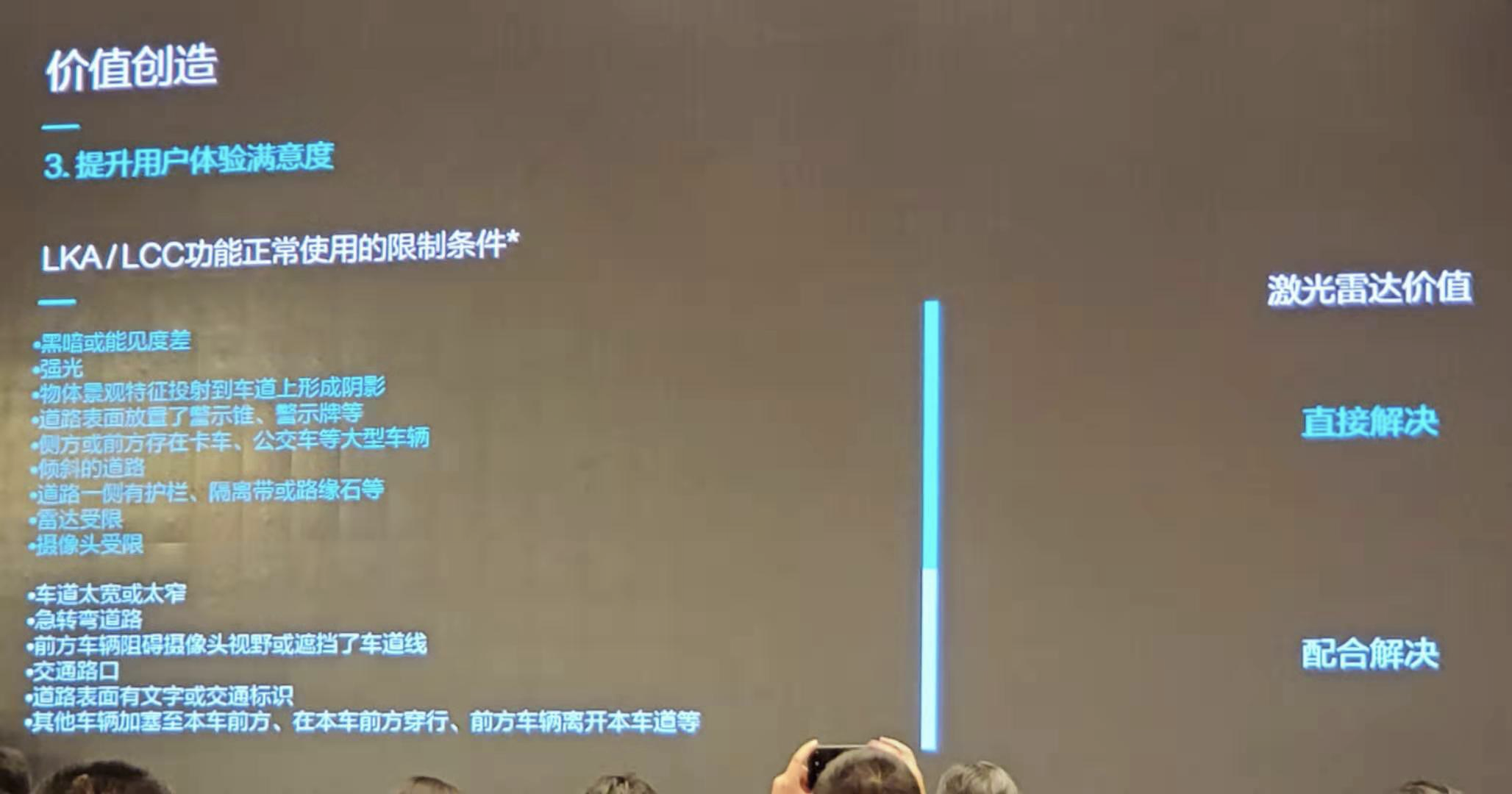
Therefore, for XPeng Motors and most other enterprises, fusing LIDAR and camera data for perception is a very meaningful thing to do.
While the idea is good, there is also an equally important issue mentioned earlier – cost.
As far as I know, the price of LIDAR is usually tens of thousands to hundreds of thousands of dollars. Except for those Robotaxi companies that do not have drivers, the cases of using LIDAR in mass-produced cars on the market are few and wearing LIDAR is only seen in expensive models, such as the current A8 and the newly refurbished S-Class.
But the iteration of the industry seems to have exceeded my expectations. The price of an entry-level mass-produced LIDAR from the Livox brand has dropped to $800 this year, and this trend of price reduction is continuing.
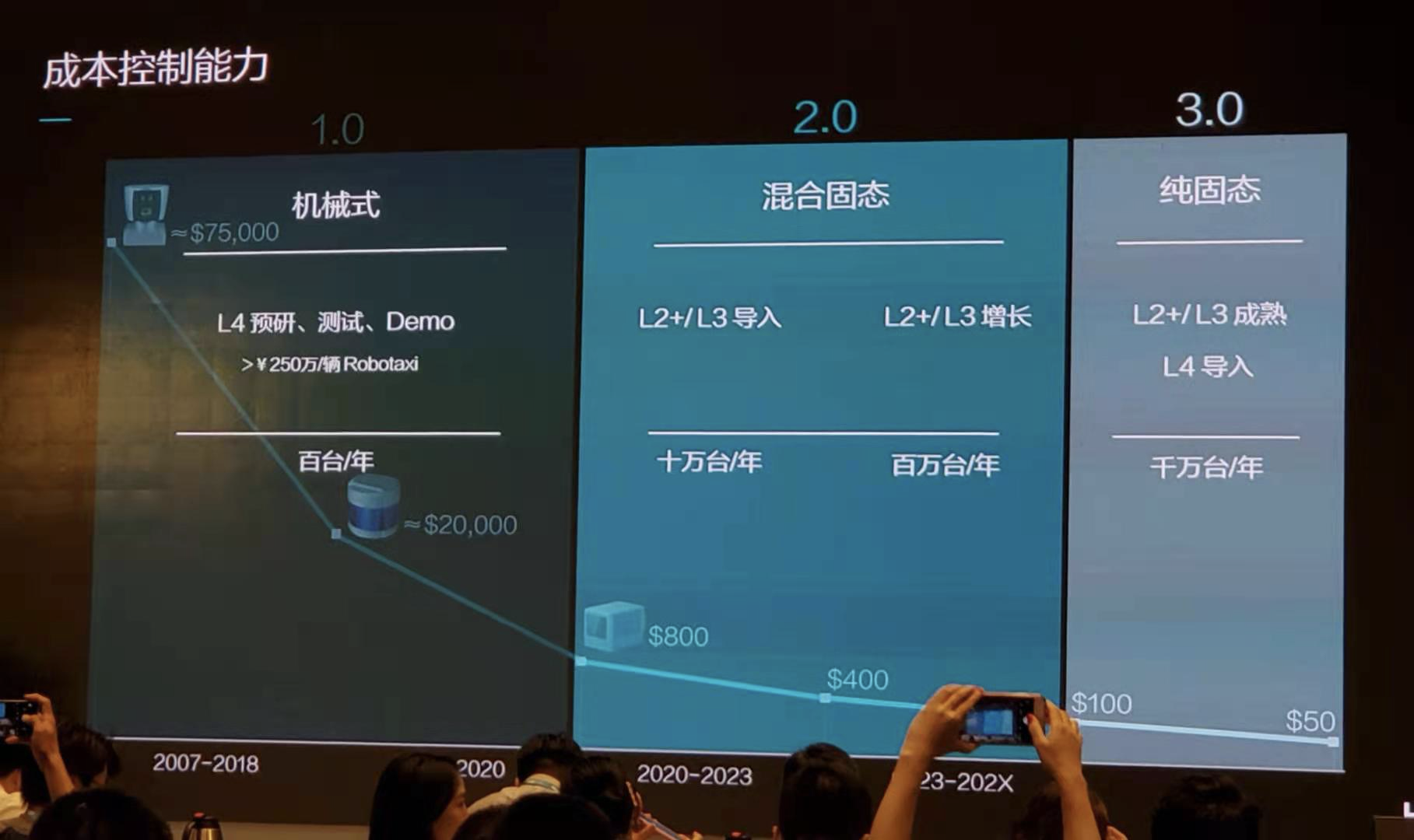
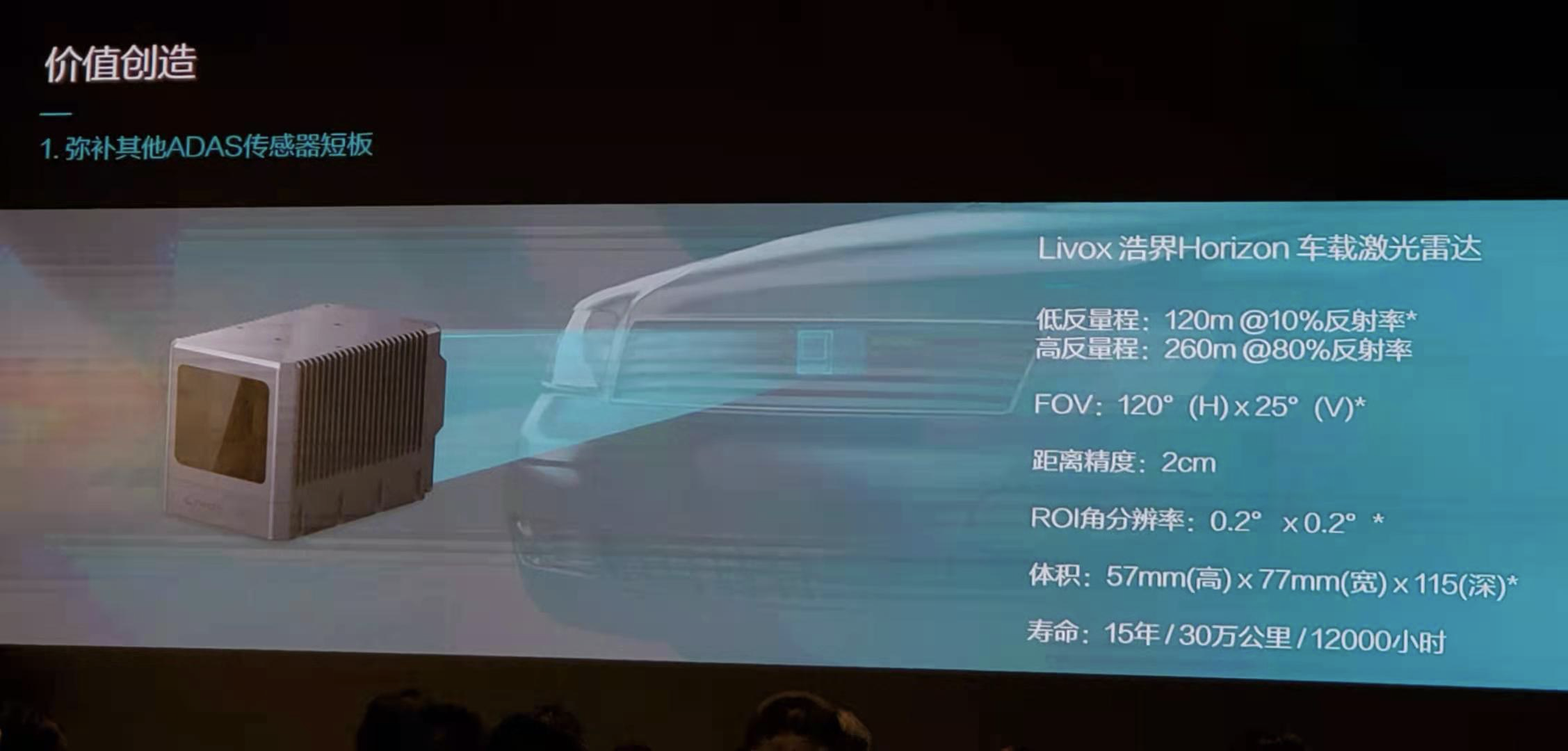 This entry-level LiDAR from Livox, priced at $800, offers a horizontal working angle of 120° and a vertical working angle of 26° with a resolution of 0.2° x 0.2° and a distance accuracy of 2 cm.
This entry-level LiDAR from Livox, priced at $800, offers a horizontal working angle of 120° and a vertical working angle of 26° with a resolution of 0.2° x 0.2° and a distance accuracy of 2 cm.
At the Guangzhou Auto Show, XPeng Motors revealed that their LiDAR has “ultra-high resolution of <0.1°”, but they have not disclosed which company’s product will be utilized in their upcoming vehicle.
In an interview, He XPeng stated that the next car model to be equipped with LiDAR will be a compact A+ class sedan.
Given this information, we can infer that this car will be positioned below the P7 and most likely priced under 200,000 RMB. It is apparent that the cost of LiDAR is no longer prohibitive for XPeng Motors to use in their cars.
Therefore, from both cost and value perspectives, adopting LiDAR is reasonable and makes sense.
In my opinion, there is no right or wrong between Tesla and XPeng Motors’ differences in LiDAR. They each have unique circumstances and technological systems, which lead to different considerations.
The LiDAR fusion perception system, which emphasizes vision, may not have as high an upper limit as the neural network 4D vision, but its lower limit is significantly improved with the assistance of LiDAR.
Before the deadline, the work group shared a message: Mobileye, an industry giant in autonomous driving vision solutions, and LiDAR company Luminar reached an agreement to provide LiDAR to Mobileye’s Robotaxi fleet.
Mobileye’s consideration is not surprising – safety redundancy.
The dispute between Tesla and XPeng Motors regarding LiDAR is far from over. The use of autonomous driving LiDAR remains uncertain in the future.
However, when I think of these two companies at this contentious juncture, what comes to mind is the first time I used FSD (Full Self-Driving) and XPeng G3’s parking performance in our first 42Mark test, which exceeded everyone’s expectations.
As a person who deeply loves the intelligent automobile industry, these moments of joy are much more profound and lasting than the current disputes.However, it is precisely because of commercial competition that each company strives tirelessly to establish its own core technology barrier, and seeks to impress consumers with more valuable products. Therefore, to some extent, we have a better chance of experiencing the surprising technology.
Of course, each company will also spare no effort to protect their achievements and prevent them from being destroyed. Naturally, later entrants will face greater challenges.
But on the road to great achievements, who has not been a later entrant? However, commercial competition has always been fierce.
This article is a translation by ChatGPT of a Chinese report from 42HOW. If you have any questions about it, please email bd@42how.com.
